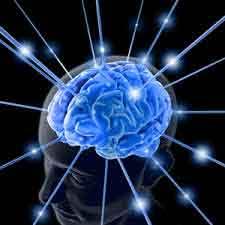- Home
- Medical news & Guidelines
- Anesthesiology
- Cardiology and CTVS
- Critical Care
- Dentistry
- Dermatology
- Diabetes and Endocrinology
- ENT
- Gastroenterology
- Medicine
- Nephrology
- Neurology
- Obstretics-Gynaecology
- Oncology
- Ophthalmology
- Orthopaedics
- Pediatrics-Neonatology
- Psychiatry
- Pulmonology
- Radiology
- Surgery
- Urology
- Laboratory Medicine
- Diet
- Nursing
- Paramedical
- Physiotherapy
- Health news
- Fact Check
- Bone Health Fact Check
- Brain Health Fact Check
- Cancer Related Fact Check
- Child Care Fact Check
- Dental and oral health fact check
- Diabetes and metabolic health fact check
- Diet and Nutrition Fact Check
- Eye and ENT Care Fact Check
- Fitness fact check
- Gut health fact check
- Heart health fact check
- Kidney health fact check
- Medical education fact check
- Men's health fact check
- Respiratory fact check
- Skin and hair care fact check
- Vaccine and Immunization fact check
- Women's health fact check
- AYUSH
- State News
- Andaman and Nicobar Islands
- Andhra Pradesh
- Arunachal Pradesh
- Assam
- Bihar
- Chandigarh
- Chattisgarh
- Dadra and Nagar Haveli
- Daman and Diu
- Delhi
- Goa
- Gujarat
- Haryana
- Himachal Pradesh
- Jammu & Kashmir
- Jharkhand
- Karnataka
- Kerala
- Ladakh
- Lakshadweep
- Madhya Pradesh
- Maharashtra
- Manipur
- Meghalaya
- Mizoram
- Nagaland
- Odisha
- Puducherry
- Punjab
- Rajasthan
- Sikkim
- Tamil Nadu
- Telangana
- Tripura
- Uttar Pradesh
- Uttrakhand
- West Bengal
- Medical Education
- Industry
How Brain Can Enhance Neuron Connections

When the brain forms memories or learns a new task, it encodes the new information by tuning connections between neurons. Now, neuroscientists have discovered a novel mechanism that contributes to the strengthening of these connections, called synapses.
At each synapse, a pre-synaptic neuron sends chemical signals to one or more post-synaptic receiving cells.
The team from Massachusetts Institute of Technology (MIT) found that pre-synaptic neurons also influence connection strength.
"This mechanism that we have uncovered on the pre-synaptic side adds to a toolkit that we have for understanding how synapses can change," said Troy Littleton, professor in the departments of biology and brain and cognitive sciences.
One of the biggest questions in the field of neuroscience is how the brain rewires itself in response to changing behavioural conditions -- an ability known as plasticity.
This is particularly important during early development but continues throughout life as the brain learns and forms new memories.
Learning more about how synapses change their connections can help scientists better understand neurodevelopmental disorders such as autism.
Many of the genetic alterations linked to autism are found in genes that code for synaptic proteins.
At each synapse, a pre-synaptic neuron sends chemical signals to one or more post-synaptic receiving cells.
The team from Massachusetts Institute of Technology (MIT) found that pre-synaptic neurons also influence connection strength.
"This mechanism that we have uncovered on the pre-synaptic side adds to a toolkit that we have for understanding how synapses can change," said Troy Littleton, professor in the departments of biology and brain and cognitive sciences.
One of the biggest questions in the field of neuroscience is how the brain rewires itself in response to changing behavioural conditions -- an ability known as plasticity.
This is particularly important during early development but continues throughout life as the brain learns and forms new memories.
Learning more about how synapses change their connections can help scientists better understand neurodevelopmental disorders such as autism.
Many of the genetic alterations linked to autism are found in genes that code for synaptic proteins.
Next Story


